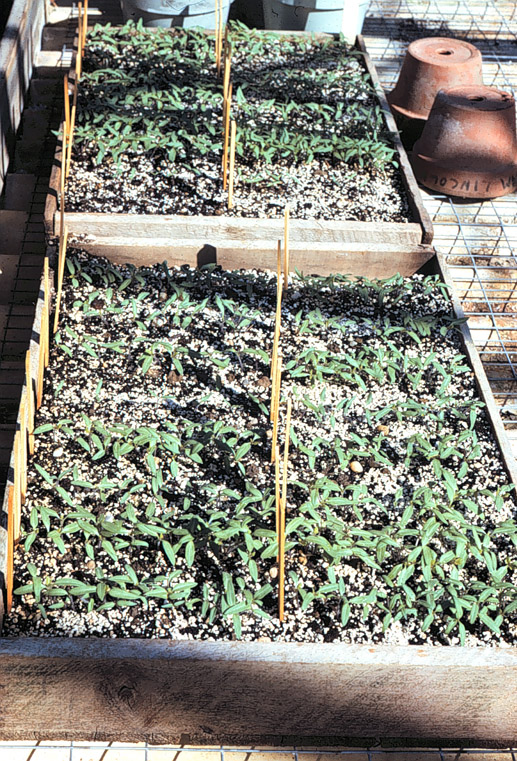Resource Library
Plant of the Week: Garden seeds
Those in the greenhouse and nursery industry know that their field of endeavor is close to recession proof. Ironically, it is when times are booming and customers are jetting off to Europe that garden center sales may slump a bit. But, throw in a good crisis and people return to the gardening fold. One of the shortages of the 2020 pandemic season was vegetable garden seeds and the trend is continuing this year.
In the spring of 2020 lots of people decided about March 10 that, being as they were home anyway, it was a good time to plant or expand their vegetable gardens. This is a logical reaction to unprecedented events but the seed houses were mostly caught flat footed like everyone else. They had their own pandemic concerns and were trying to sort out all the confusing and contradictory information filtering in from outside as the phone rang off the hook and orders poured in. Though accurate estimates are hard to come by, I’ve seen reports that for some firms, demand tripled or more.
The 2021 season is much the same with interest even higher and demand even stronger. Several specialty seed companies report demand up substantially over the 2020 season. They are being forced to take actions to regulate sales volume and warning customers there may be delays in receipt of seeds. Reports of sold out seed lots are common this spring, but primarily for specific cultivars. Like toilet paper, your quilted Charmin may be out of stock, but the store may have some of that thin, flimsy stuff that does the job, though just barely. You may not be able to find seeds of your favorite tomato or some vegetable garden curiosity, but substitutes are available.
Though there has been a general increase in vegetable gardening over the past several decades, the last really big surge in demand for garden seeds was in 2000, when the Y2K craziness was all the rage. A friend from Madison County told me land prices doubled in her neighborhood as the conspiracy theorists of that time prepared for the coming collapse of civilization. A neighbor of mine blew a hole in his roof in a complicated survivalist scheme involving rice, four-inch plastic pipes and dry ice. Though the Y2K seed sales increase was big, it pales in comparison to that caused by the COVID-19 pandemic.
Saving your own seeds for coming years is a viable alternative to buying them. But make sure the cultivar you are saving is an open pollinated line, not a hybrid. By definition, heirloom vegetables are all open pollinated. Allow the fruit you intend to harvest seed from to reach full maturity while still on the vine. Ideally, choose a time during peak production when the plant is growing best, not at the beginning or end of the season when it is slowing down.
Cleaning and saving seeds from over-ripe tomatoes, slimy pumpkins or dry okra pods all involve specific tricks to make the job go easier. As a long time seed saver, I’ve always found saving, cleaning and storing seeds a therapeutic balm that enhances my enjoyment of gardening. Many communities, often through Master Gardener groups, have local seed exchanges in the spring and afford the opportunity to share your bounty and try new things in the garden.
The pandemic too shall pass, and things will return to normal. The shape and texture of the new normal is anybody’s guess, but it will include millions of citizens who have been inoculated with an exposure to the gentle, sometimes frustrating, art of gardening. This can only be a good thing.
For more information about horticulture or to see other Plant of the Week columns, visit Extension’s Website, www.uaex.uada.edu, or contact your county extension agent. The Cooperative Extension Service is part of the U of A Division of Agriculture.
